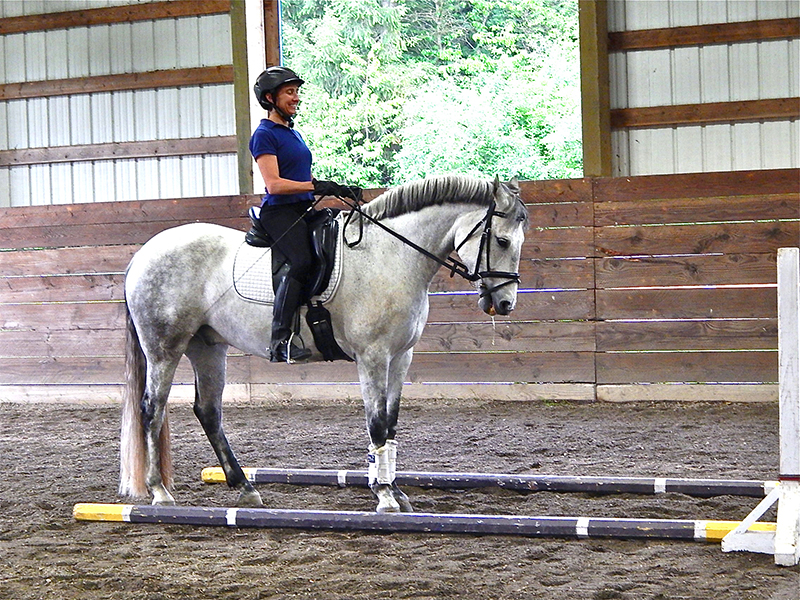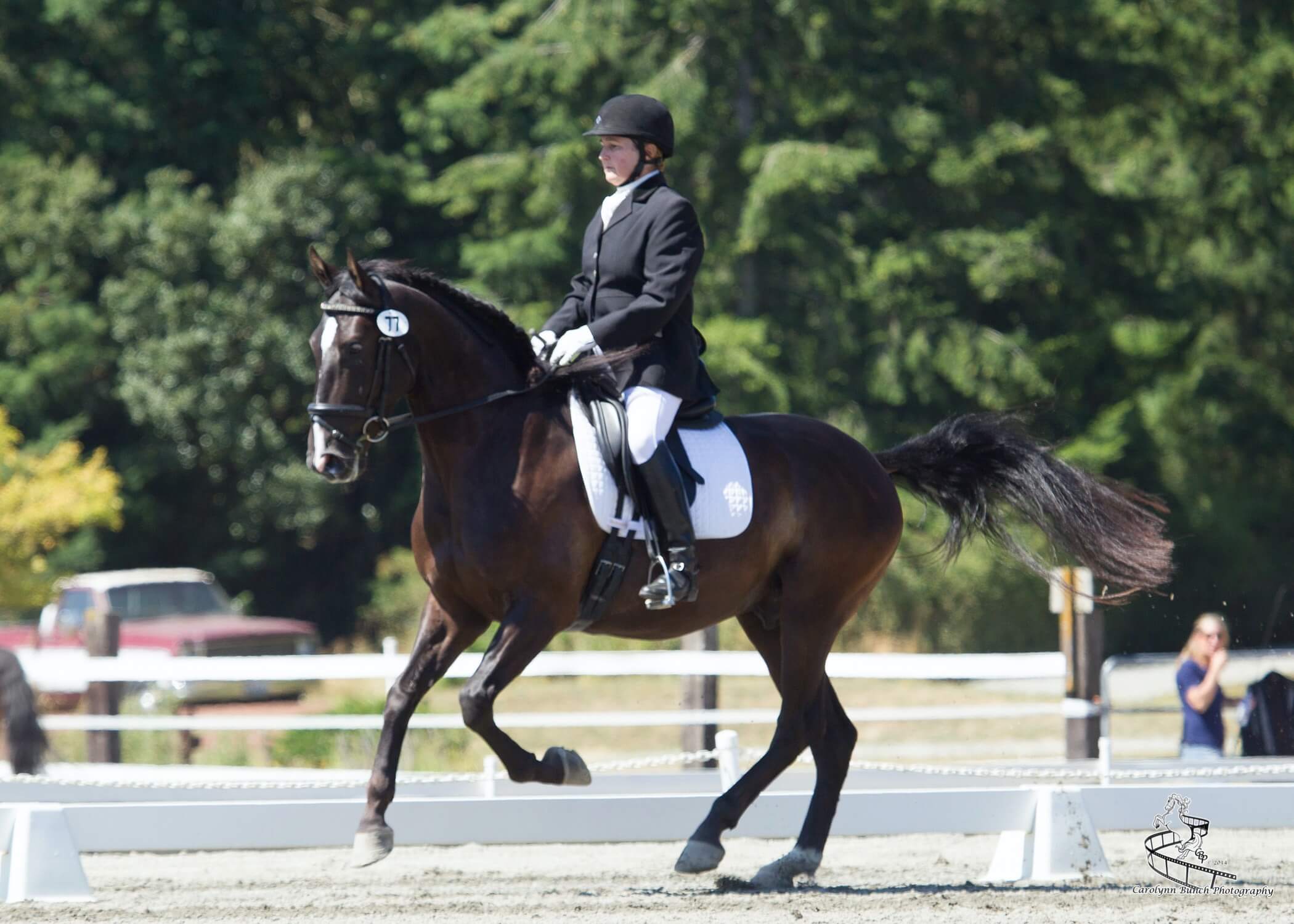The Ease of Handling Trial
by Kim Roe
Last month we covered the dressage phase of working equitation, now we explore phase 2: the “ease of handling” trial. This trial involves a course of 8 – 15 obstacles ridden slowly and precisely, like dressage through obstacles. The objective of this trial is to demonstrate a horse’s ability to move through a series of obstacles, the type one might encounter out in the fields of a ranch or farm. The horse and rider should demonstrate precision, harmony, serenity and style. The horse should be supple, active, perform the obstacles without fear or resistance and demonstrate quality gaits—those with cadence and amplitude (range of motion), as well as smooth transitions. The obstacles are numbered and ridden in order and set up in a groomed, level arena with good footing.
Scoring:
The judge considers the behavior and movement of the horse, and the rider’s composure, precision and quiet use of the aids while performing the obstacles. The track between the obstacles is also judged. Since most work in the field is performed in walk and canter the trot, in this trial, is not a preferred gait. It is only allowed in the lower levels, and severely penalized at the higher levels. Each possible obstacle has a precisely defined way of being ridden. These specifics can be found on the WEIAUSA website under “rules” and are scored on a scale from 0 – 10.

The obstacles might include the following: figure 8 between drums set 3 meters apart, wooden bridge, slalom between parallel posts, jumping over bales of straw, slalom between posts, opening and closing a gate, bell at end of corridor, earthenware jug, backing up in an L, side-stepping over a log, riding through a water-filled ditch, negotiating a bank, switching a glass from a pole to another, herding animals from gate to gate and circling a small pen of animals like chickens and ducks, etc.
One combination of obstacles involves the removal of a long wooden pole (garrocha), which is between 8 and 11 feet long, from a drum or barrel. The rider canters his/her horse to the barrel and retrieves the pole. Points are deducted for the following: if the rider must circle to retrieve the pole, if the rider breaks to trot or walk and if the horse reacts negatively to the pole. For the next obstacle, the rider must skewer a ring with the pole, at the canter, and continue on in the canter, finally placing the pole into another drum. The judge considers the cadence and regularity of the canter (or trot/walk in the lower levels), the horse’s relaxed attitude and the fluidity of the movement. If the rider drops the pole at any point, he or she must dismount, pick up the pole and re-mount while holding the pole. So, if you have a hard time mounting, don’t drop the pole! Another movement that uses the garrocha is the herding of animals from gate to gate. The horse and rider combination moves a small herd of sheep, goats, or calves, using the pole, from one small enclosure to another. This includes opening one gate and closing another behind the animals as there are two fenced pens with a gate between them and a gate to enter. Here the judge considers the horse’s natural ability, calmness and smoothness.
For working equitation you don’t need an elaborate course of obstacles at home to prepare yourself and your horse. Most of the obstacles you will encounter are things you can create using some jump poles, barrels and jump standards. Most everyone has a few bales of straw or hay that can be used for a jump. The garrocha can be made by purchasing some wooden dowel at a hardware store. I use the gate that goes into my arena as a training tool and riding out on the trail you will encounter wooden bridges, banks and ditches. Of course, you will need to expose your horse to livestock such as chickens, ducks, goats, and calves. I find horses are especially worried about sheep if they haven’t seen them before. The most important thing is that your horse must be on your aids and understand how to go forward with smooth transitions, to halt and stand quietly, back up, and demonstrate patience and the ability to wait for you. Happy practicing.
Next month: the speed trial.

Kim Roe grew up riding on the family ranch and competed in Western rail classes, trail horse, reining, working cow, and hunter/jumper. She trained her first horse for money at 12 years old, starting a pony for a neighbor.
Kim has been a professional dressage instructor in Washington state for over 30 years, training hundreds of horses and students through the levels. In recent years Kim has become involved in Working Equitation and is a small ‘r’ Working Equitation judge with WE United.
Kim is the editor of the Northwest Horse Source Magazine, and also a writer, photographer, and poet. She owns and manages Blue Gate Farm in Deming, Washington where she continues to be passionate about helping horses and riders in many disciplines.





